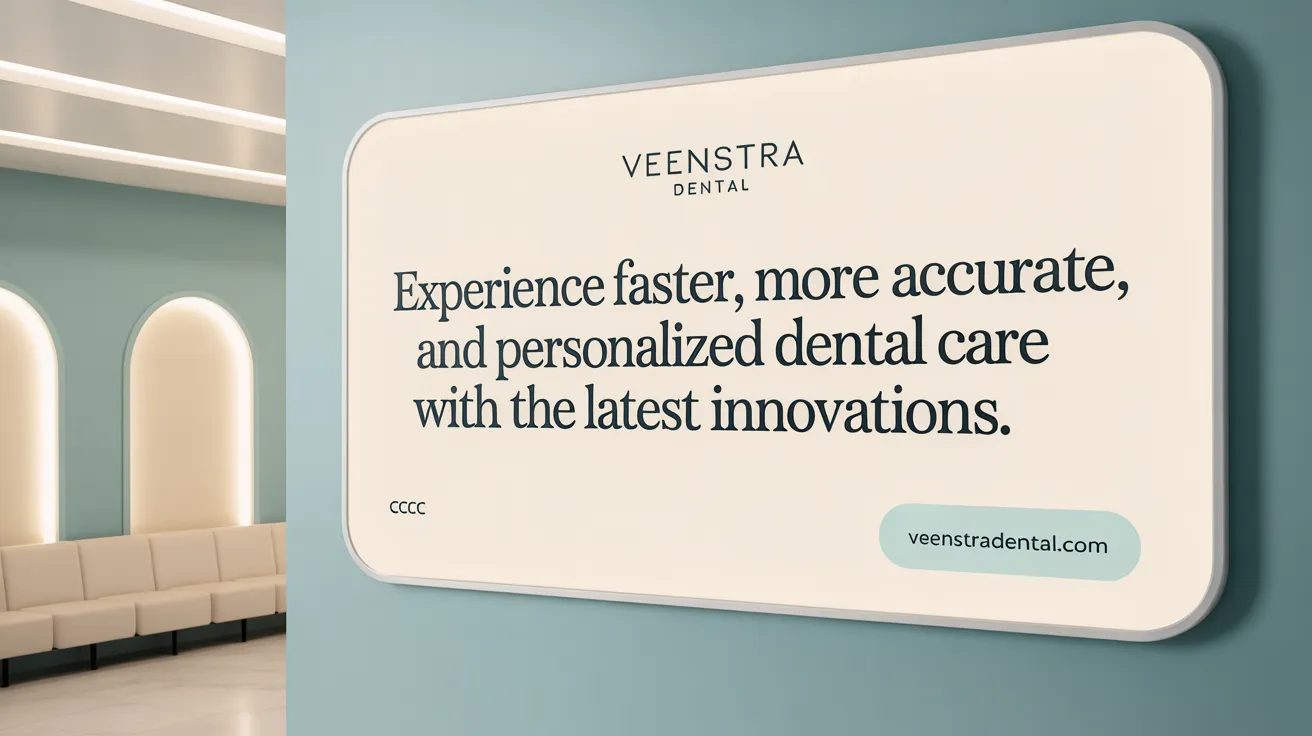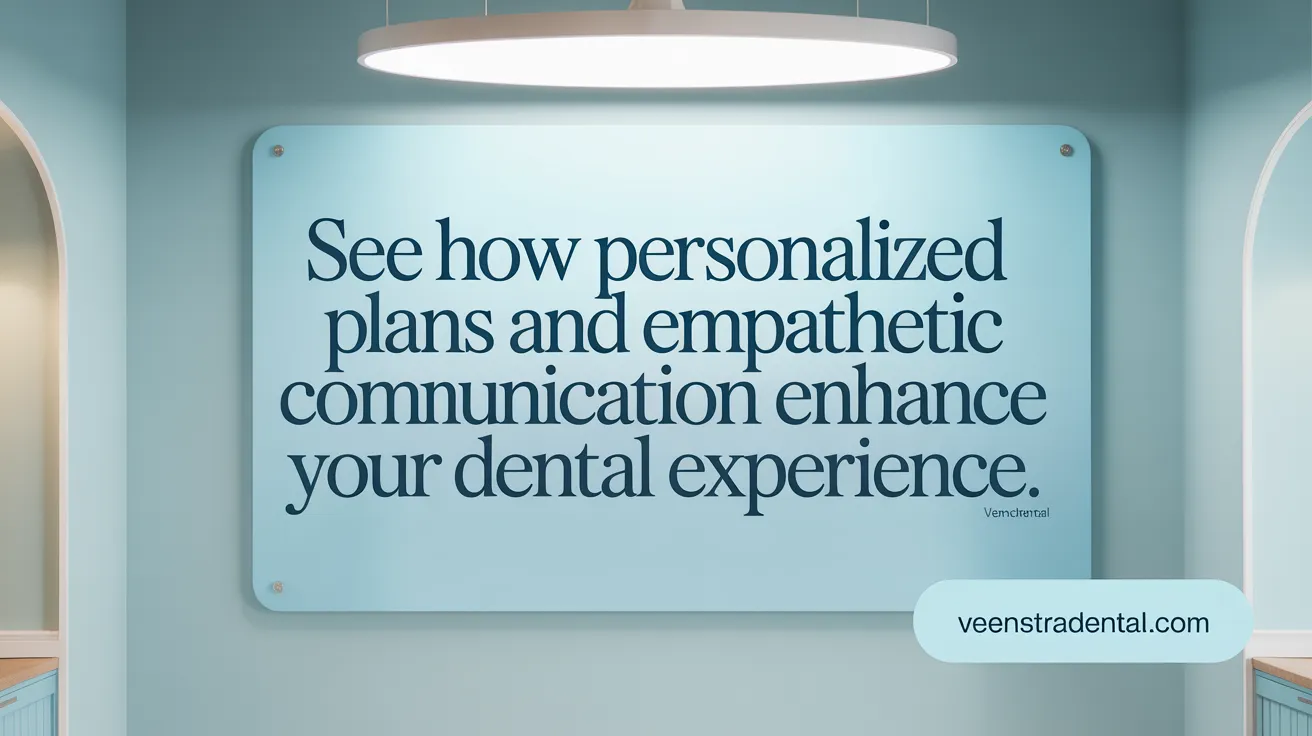A New Era in Dental Care Comfort
Advancements in dental care have significantly shifted the patient experience, prioritizing comfort through cutting-edge technology and patient-centered approaches. This article explores how modern dentistry integrates innovative techniques and emerging technologies to reduce discomfort, alleviate anxiety, and tailor treatments for optimal outcomes. From advanced imaging and ergonomic designs to AI diagnostics and sensory interventions, today’s dental practices are redefining what it means to receive care in a stress-free and supportive environment.
Innovative Approaches Enhancing Comfort in Dental Treatment
What are some innovative approaches and advancements in dental care aimed at enhancing patient comfort?
Modern dental practices are actively adopting innovative techniques and technologies to make patient experiences more comfortable and less stressful. One significant advancement is laser dentistry, which employs focused light beams to treat soft and hard tissues. Laser procedures cause less pain, reduce bleeding and swelling, and facilitate faster healing, making dental treatments less invasive and more tolerable.
Digital imaging technologies also play a crucial role in improving patient comfort. Intraoral scanners and digital X-rays provide quick, accurate visualizations of oral structures, minimising the discomfort associated with traditional impression-taking. These tools not only enhance diagnostic precision but also help patients better understand their oral health, fostering trust and active participation in care decisions.
Sedation methods have evolved to better accommodate anxious or fearful patients. Options such as nitrous oxide (laughing gas), oral sedation, and IV sedation offer effective relaxation, enabling patients to undergo procedures without distress while maintaining safety and quick recovery.
Clinic design also influences patient comfort significantly. Facilities that incorporate calming décor, soft lighting, soothing sounds, and amenities like entertainment screens or blankets create a spa-like environment, easing anxiety. Personalized treatment plans and clear communication further enhance patient experience by establishing trust and delivering care tailored to individual needs.
Furthermore, telehealth services are expanding access to dental care through remote consultations, follow-ups, and second opinions. This approach reduces the need for stressful visits, improves convenience, and ensures ongoing support, especially beneficial for patients with mobility issues or those living in remote areas.
These advancements collectively contribute to a more positive, patient-centered dental experience, emphasizing comfort, safety, and engagement.
Modern Technologies Transforming the Patient Experience

How do modern dental technologies benefit the patient experience?
Modern dental technologies significantly enhance the patient experience by making procedures faster, more comfortable, and highly personalized. Advanced diagnostic tools like digital X-rays and 3D imaging enable dentists to detect issues early and plan treatments with greater accuracy. This early detection reduces the risk of complications and ensures more effective care.
Digital impressions, created with intraoral scanners, replace traditional molds, making the experience less invasive and more comfortable for patients. These digital methods also improve the accuracy of restorations like crowns and bridges. Laser dentistry minimizes pain, bleeding, and swelling, leading to shorter recovery times and less discomfort, especially beneficial for anxious or sensitive patients.
Innovations such as CAD/CAM technology and highly precise 3D printing facilitate same-day restorations. Patients can receive crowns, implants, or orthodontic appliances in a single visit, reducing the need for multiple appointments and speeding up treatment cycles.
Teledentistry expands access to care by enabling virtual consultations, follow-ups, and second opinions. This convenience increases patient engagement and allows for continuous care even from remote locations. Environmental improvements, including calming atmospheres and sensory stimuli, further reduce dental anxiety, making visits less stressful.
Overall, these technological advances foster a more positive, efficient, and personalized dental experience, boosting patient satisfaction and health outcomes.
Comfort-Enhancing Techniques and Psychological Strategies

What techniques and methods are used to improve comfort during dental procedures?
Modern dental practices prioritize patient comfort through a variety of technological and psychological strategies. Ergonomic dental equipment, such as advanced dental chairs with adjustable features, ergonomic design, noise and vibration reduction, and climate-controlled environments, significantly enhance physical comfort during treatments. Techniques like laser dentistry and digital impressions minimize tissue trauma and discomfort, reducing the need for traditional invasive procedures.
Beyond physical comfort, psychological methods are vital. Distraction techniques, such as listening to calming music or watching videos, help divert attention from dental procedures. Relaxation practices like deep breathing exercises, progressive muscle relaxation, and mindfulness improve patient ease. Some clinics incorporate aromatherapy with soothing scents such as lavender or mint to evoke positive emotions and reduce anxiety.
For patients with severe dental anxiety, pharmacological options—including nitrous oxide (laughing gas), oral sedation, or IV sedation—are available. These methods help patients remain calm and comfortable, particularly during complex or lengthy procedures.
Effective communication is central to comfort. Building trust through clear explanations, empathetic listening, and personalized care reassures patients and reduces fear. Creating a soothing office environment with calming lighting, soft textures, and friendly staff further diminishes stress.
In essence, combining innovative equipment, relaxation techniques, sedation options, and compassionate communication forms a comprehensive approach to enhancing patient comfort during dental visits. This holistic effort aims to make dental care a positive, anxiety-free experience for every patient.
Patient-Centered Care and Technology: A Synergistic Approach

How does personalized treatment planning contribute to patient-centered care?
Personalized treatment planning sits at the heart of patient-centered dentistry. It involves comprehensive assessments that consider each patient’s unique health status, needs, and preferences. Using advanced diagnostic tools such as digital X-rays, 3D imaging, and intraoral scanners, dentists can gather detailed visual data for precise diagnoses. This allows for tailored treatments that align with patient goals and comfort levels, improving adherence and satisfaction.
What role does shared decision-making (SDM) play?
Shared decision-making is essential in promoting patient autonomy. It involves a collaborative process where dentists inform patients about their options, including the benefits and risks, and patients voice their values and preferences. SDM supported by visual aids, digital simulations, and clear communication enhances understanding. This approach not only respects patient independence but also leads to more effective and accepted treatment plans.
How is technology integrated into care?
Modern dental clinics leverage a variety of innovative technologies to enhance care. Digital impressions and intraoral scanners create quicker, more comfortable impressions with high accuracy. Laser dentistry minimizes invasiveness, reducing pain, bleeding, and recovery time. AI-assisted diagnostics analyze images to detect issues early, allowing for preventive and precise interventions. These tools make treatments faster, less intrusive, and more predictable.
How does empathetic communication enhance patient experience?
Empathy is fundamental to patient-centered care. Dentists and staff are trained to listen actively, respond compassionately, and explain procedures in understandable terms. Technologies like high-resolution intraoral cameras help patients visualize their oral health status, fostering trust and informed consent. Moreover, creating a calming environment with soothing music, aromatherapy, and noise reduction reduces anxiety.
In what ways does clinic environment design support patient comfort?
The physical setting influences patient relaxation significantly. Many clinics incorporate warm lighting, calming décor, and sensory elements like gentle scents and quiet zones. Some facilities, like pediatric clinics, use playful themes and amenities to ease children's nerves. Temperature-controlled treatment rooms and ergonomic chairs further enhance comfort during procedures.
Why is staff training in patient-centered care important?
Ongoing staff education in emotional intelligence, communication skills, and new technologies ensures consistent delivery of compassionate, informed care. Cross-training enables team members to address various patient needs efficiently. Continuous training keeps staff updated on advancements, fostering a culture where patient comfort and preferences are always prioritized.
How do these elements work together?
The integration of advanced technology, personalized planning, empathetic communication, and comfortable environments creates a holistic approach to modern dentistry. This synergy leads to better health outcomes, increased patient satisfaction, and greater trust. Patients feel valued and understood, which encourages active participation and adherence to treatment plans.
| Aspect | Tools/Strategies | Impact | Additional Details |
|---|---|---|---|
| Personalization | Digital imaging, assessments | Tailored treatments | Meets individual needs for comfort and health |
| Decision-making | Visual aids, patient education | Increases understanding and satisfaction | Encourages patient involvement |
| Technology | Laser, AI diagnostics, digital impressions | Quicker, less invasive care | Improves accuracy and reduces discomfort |
| Environment | Aromatherapy, calming décor, noise control | Reduces anxiety | Promotes relaxation and trust |
| Staff Training | Emotional intelligence, tech updates | Consistent, compassionate care | Ensures high standards of patient experience |
Overall, the combination of innovative technology and a compassionate, patient-centered attitude transforms dental visits into positive, effective experiences. This approach not only enhances patient comfort but also leads to better health outcomes and stronger patient-provider relationships.
Emerging Innovations Reducing Anxiety and Boosting Comfort

What are some emerging innovations such as AI diagnostics, 3D printing, and sensory stimulation strategies that can reduce anxiety and increase comfort in dental care?
Modern dentistry is increasingly adopting innovative technologies and approaches to create a more relaxed, patient-focused experience. AI-powered diagnostics represent a significant advancement, allowing for pain-free assessments, early detection of oral conditions like cavities, gum disease, and oral cancer, and precise treatment planning. These tools enable quicker, more accurate diagnoses, reducing patient discomfort and anxiety.
AI chatbots also play a role by providing pre-visit reassurance, answering patient questions, and explaining procedures clearly. This continuous digital support helps patients feel more informed and confident before treatment.
In addition to digital innovations, immersive distractions like VR (Virtual Reality) and AR (Augmented Reality) are being used during procedures. These technologies immerse patients in calming virtual environments, significantly reducing anxiety by diverting attention from dental instruments and procedures.
3D printing has revolutionized treatment customization. It allows for the rapid production of personalized dental devices such as crowns, implants, bridges, and orthodontic aligners with high precision. This not only improves the fit and comfort of dental appliances but also shortens treatment times, enhancing overall patient experience.
Creating an environment conducive to relaxation is also vital. Many clinics incorporate climate-controlled rooms, ergonomic chairs, soothing lighting, calming colors, and ambient elements like gentle music or natural scenery. These features help establish a serene atmosphere, reducing environmental stressors.
Complementing technological and environmental enhancements, evidence-based relaxation techniques are employed, including breathing exercises, mindfulness, and muscle relaxation strategies. When combined with sedation methods—such as nitrous oxide, oral sedatives, or IV sedation—they form a comprehensive approach to manage dental anxiety.
Overall, these innovations demonstrate a commitment to making dental visits less intimidating and more comfortable, encouraging patients to seek regular care and maintaining better oral health outcomes.
The Future of Comfortable Dental Care
The landscape of dental care is rapidly evolving through the integration of innovative technologies and a strong commitment to patient-centered care. Techniques ranging from laser dentistry and ergonomic equipment to AI diagnostics and sensory engagement strategies collectively enhance both the physical and emotional comfort of patients. Ongoing advances such as 3D printing and immersive virtual reality experiences promise to push these boundaries further, making dental visits less stressful and more accessible. By continuously adopting these advancements and emphasizing empathy and communication, dental professionals are not only improving treatment outcomes but also creating welcoming, personalized environments that transform patient experiences for the better.
References
- Enhancing patient-centred care in dentistry: a narrative ...
- Innovations in Patient Comfort
- How Modern Dental Clinics Improve Patient Comfort and ...
- Enhancing Patient Comfort with Advanced Dental Technology
- How Advances In Dentistry Transform Patient Care?
- Elevating Patient Comfort: Breakthroughs in Dental ...
- Enhancing Patient Comfort in Dental Treatments
